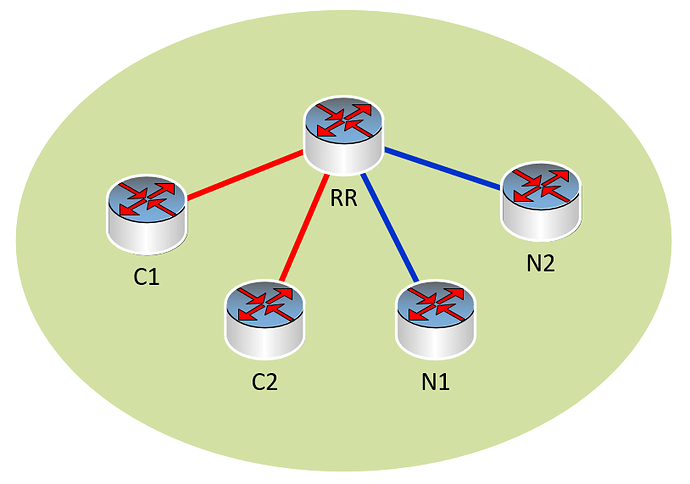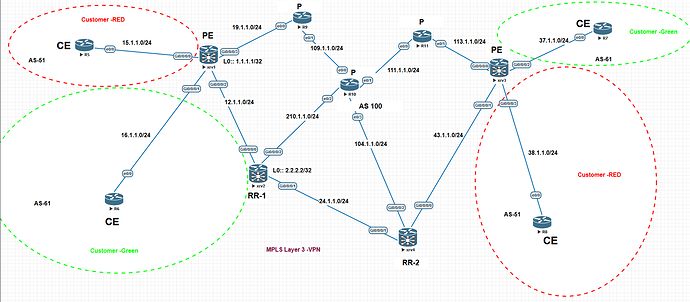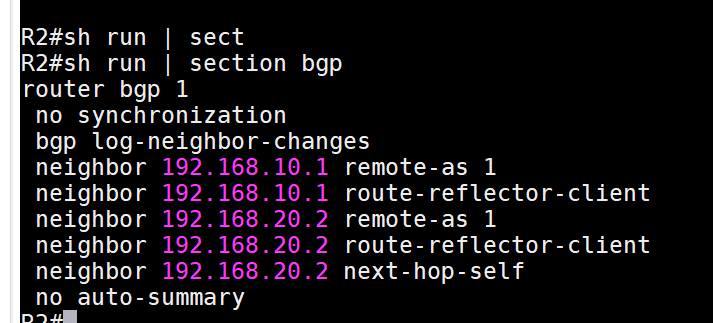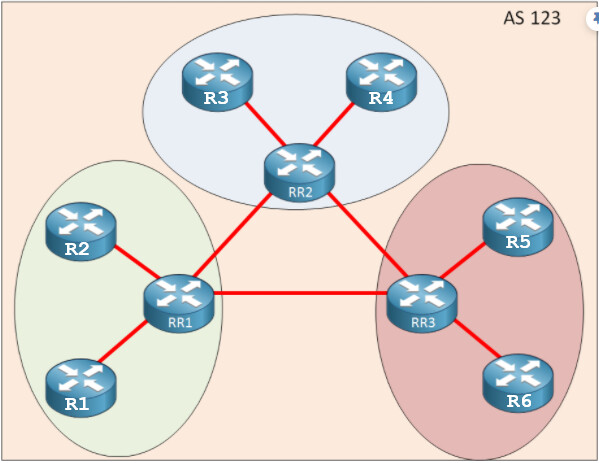Hello Tanmoy
R2 is the route reflector, so if you issue this command in R2, you will get a slightly different output. I labbed it up and got the following:
R2#show ip bgp 1.1.1.1
BGP routing table entry for 1.1.1.1/32, version 2
Paths: (1 available, best #1, table default)
Advertised to update-groups:
1
Refresh Epoch 1
Local, (Received from a RR-client)
192.168.12.1 from 192.168.12.1 (1.1.1.1)
Origin IGP, metric 0, localpref 100, valid, internal, best
rx pathid: 0, tx pathid: 0x0
R2#
You see that you don’t get the “Originator” and the “Cluster ID” information because this is an RR. You will see that information however, on the RR clients. For example, the output for the same command on R3 is the following:
R3#show ip bgp 1.1.1.1
BGP routing table entry for 1.1.1.1/32, version 0
Paths: (1 available, no best path)
Flag: 0x4100
Not advertised to any peer
Refresh Epoch 2
Local
192.168.12.1 (inaccessible) from 192.168.23.2 (192.168.23.2)
Origin IGP, metric 0, localpref 100, valid, internal
Originator: 1.1.1.1, Cluster list: 192.168.23.2
rx pathid: 0, tx pathid: 0
R3#
So you see here that R3 gives an originator of 1.1.1.1 which is the ID of R1. Similarly, the cluster ID shown is that of the RR.
To summarize, you will only see the Originator and the Cluster ID information on an RR client and not on the RR itself.
I hope this has been helpful! Stay healthy and safe!
Laz




